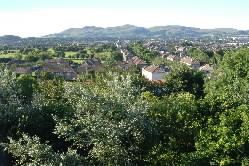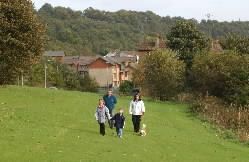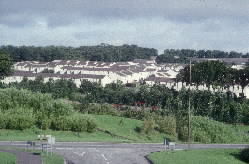Summary
How can you estimate the value that urban communities get from trees and wooded views?

Summary
Street trees and woodland views can deliver a wide range of economic, social and health benefits. Forest Research assessed methodologies, especially spatial GIS techniques, for estimating the value of these benefits.
Key findings and recommendations
Findings:

- Most amenity valuations use revealed and stated preference methods
- There are few nationwide or large-scale valuations of street trees or woodland views in the UK, based on GIS analysis
- The amenity value of woodlands often depends on species composition and conditions; in the UK broadleaved or mixed woodlands have a positive effect on house prices
- New woodlands yield the highest marginal benefits at the urban fringe
 Household characteristics (e.g. education and income level, and the
Household characteristics (e.g. education and income level, and the
presence of children) can affect the valuation of amenity woodland and open space- There is a trade-off between the value of timber production and visual amenity values of woodland, especially at the urban fringe
- Visible clear-cut sites can have major negative impacts on visual amenity values
Recommendations:
- Hedonic pricing methods are appropriate for case studies which investigate links between the property market, recreation and local use greenspace
- Stated preference methods (i.e. surveys or benefit transfer from the previous surveys) are most appropriate for large-scale changes and/or where non-use or total values are sought
- Future econometric studies should test for functional specification in hedonic models and control for the presence of spatial autocorrelations
Publications
- Estimates of the value of woodland views were made as part of the Forestry for People project
- Project summary sheet
- Project summary sheet woodland views
Funders and partners
Commissioned and funded by the Forest Commission
Status
The project was completed in 2009.
Contact
For further information contact:
